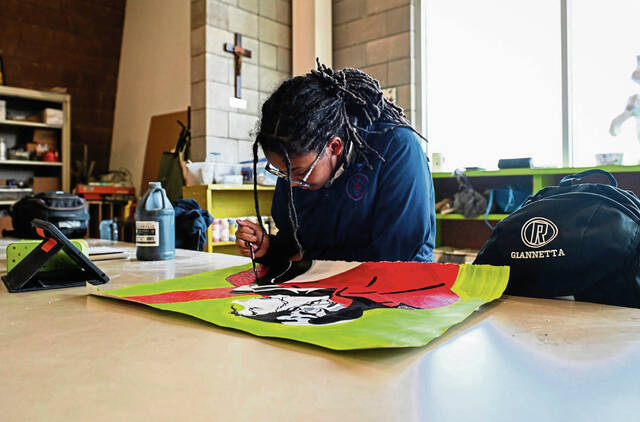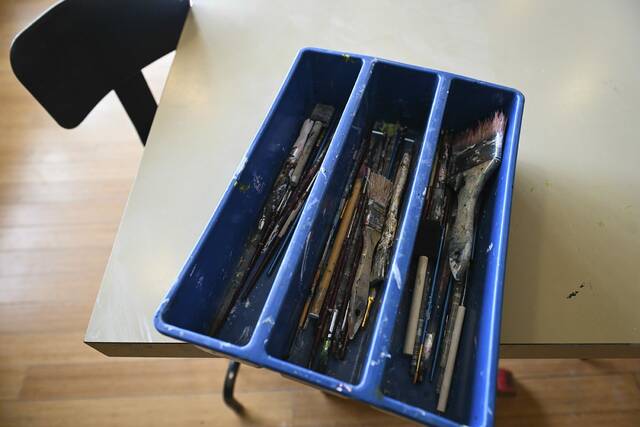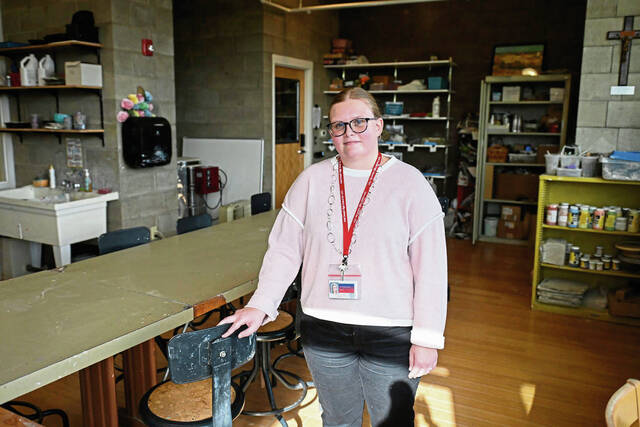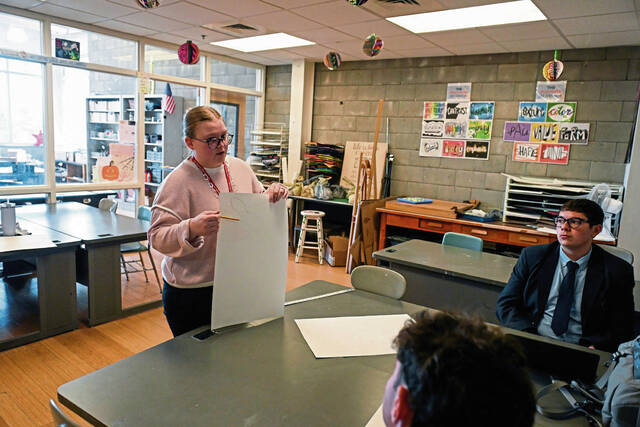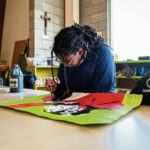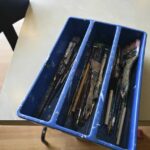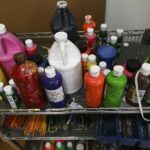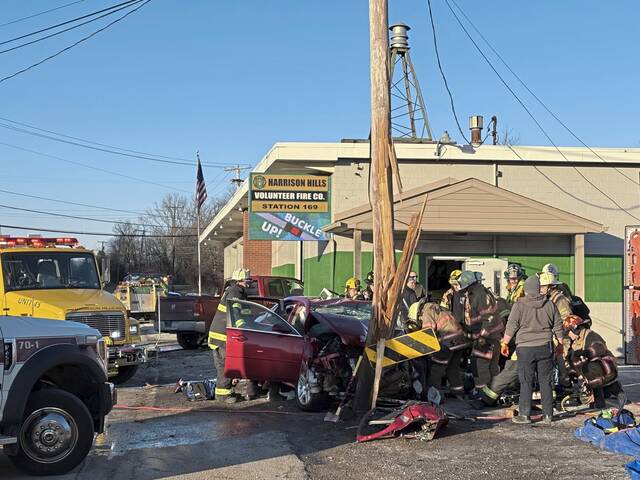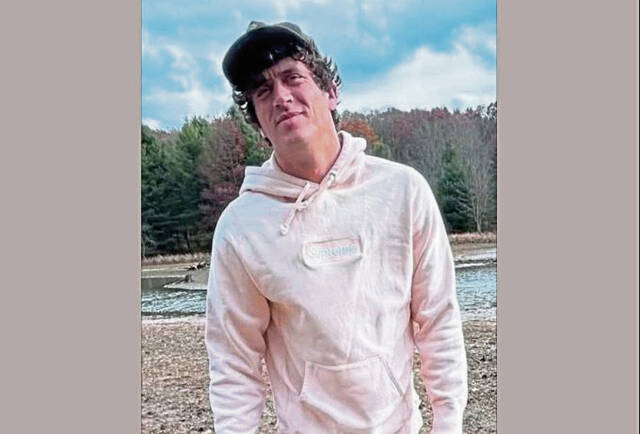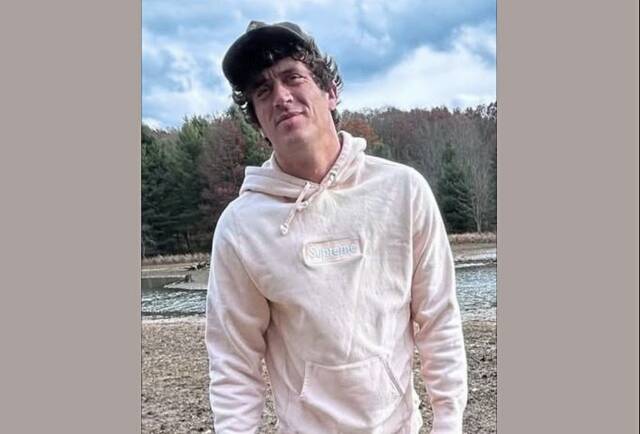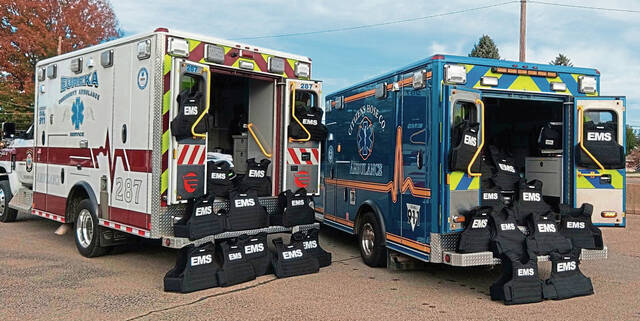Art students at St. Joseph High School in Harrison spent a recent class learning the techniques of charcoal drawing — again.
They were scheduled to be learning to use paints, but with government funding largely cut off because of the state’s ongoing budget impasse, the school doesn’t have money to buy enough paints for the classes.
It’s among the first visible signs of belt tightening as public and private schools statewide begin to feel the effects of the budget impasse, which recently reached the four-month mark.
“Many schools, including ours, are experiencing funding challenges that have limited our ability to purchase classroom art materials,” teacher Megan Morrow said. “I don’t want to limit their experience with art. I want to make sure they’re still learning, so we just have to work around what we have. We have to think outside the box.”
Pennsylvania’s 500 public schools are missing nearly $4 billion in state funding at this point. Parochial schools also are reeling because they receive state funding indirectly through the Educational Improvement Tax Credit and the Opportunity Scholarship Tax Credit. Private schools also can get textbooks and instructional materials from the state.
While districts aren’t giving a “drop dead” time for when their local tax collection money will run out and they’ll have to start borrowing to stay open, officials say that day might not be far off.
At Kiski Area, Superintendent Jason Lohr said the budget impasse is beginning to make a mark.
The impact has not yet reached the classroom, but the district is feeling the lack of state money. District officials are keeping a close eye on monthly cash flow and essential needs, Lohr said.
With more than $13 million in payments held up, Kiski Area has been forced to rely solely on real estate tax revenue to keep operations running.
“We’re being cautious with spending and postponing anything that isn’t necessary,” Lohr said.
The biggest hit has come from lost interest income.
“Normally, the district earns interest on funds while waiting for bills to come due,” he said. “Kiski usually receives between $400,000 to $500,000 annually in interest and budgets accordingly. This year, we will fall far short of this.
“The loss in revenue will eventually impact spending on classroom materials, building maintenance or other educational priorities.”
If the impasse stretches into 2026, Lohr said, the district might have no choice but to use a line of credit to ensure staff members are paid and schools continue to operate.
Across the region, many administrators said they have yet to make cuts or changes — but they find themselves concerned about how they might make up for billions of dollars in missing state funding if the impasse drags on.
By January, if a new budget or stop-gap measure isn’t approved, education officials say, districts will have used up budget surpluses. At that point, borrowing or cutbacks might not be optional.
Derry Area is missing out on about $6.5 million it expected to receive at this point in the school year, said Business Administrator Scott Chappell.
“We estimate that’s in the neighborhood of $30,000 per month in interest that the district’s losing out on by not being able to invest like it normally would,” Chappell said.
Reserves and local tax collections have allowed the district to continue operating as usual. But Derry plans to take out a line of credit or a revenue anticipation note if the state fails to approve a budget by February.
“We anticipate this level of reserves to carry us into the new calendar year,” he said. “Once we get into the February, March time frame is when we’d really have to start taking a look at things.”
In Leechburg Area, Superintendent Dave Keibler said the district’s business manager has been closely monitoring cash in hand. The district gets just more than half of its funding from the state.
“Luckily, local tax revenue has been coming in this fall to help the shortfall,” Keibler said. “I hope the state legislators resolve their differences in the near future, as we may start to be impacted as we approach the new year.”
New Kensington-Arnold — which gets 57% of its money from the state — is operating as usual, according to Superintendent Chris Sefcheck.
The district will be working in coming weeks on a plan for specific dates by which they would have to have alternate plans for funding if the budget still isn’t approved, he said.
At Riverview, Superintendent Neil English doesn’t foresee troubles since the district doesn’t rely heavily on the state. About 25% of revenue is from state payments.
“Since almost all of our funding comes from local sources, we should not have to resort to (taking a loan to keep operations afloat),” English said.
Highlands Superintendent Monique Mawhinney also said her district is sustaining operations through local tax collections and a healthy cash flow position.
The district hasn’t needed to borrow funds or draw on its reserves, despite receiving 49% of its revenue from state funding.
But Paul Paradise, director of business affairs, said previously that monitoring cash flow will become imperative as the financial pressure mounts.
According to the Pennsylvania State Education Association, school districts typically keep enough money in reserve to afford 87 days of expenses.
The 2025-26 fiscal year has reached 125 days with no state budget.
At St. Joseph, Morrow is devising a community fundraiser to tackle the school’s immediate need of art supplies.
“I don’t mind using the same medium over and over, but I’ve had to alter lesson plans because we don’t have certain materials,” she said.
Morrow is seeking unused paper of any kind — printer paper, drawing paper or cardstock in any size, weight or color. She also is in need of paintbrushes, acrylic paint and glaze for ceramics class.
“Art is a material-focused class, and to not receive materials is impactful,” she said. “My goal is to continue providing students with creative opportunities despite these limitations.”
Staff writer Quincey Reese contributed.


